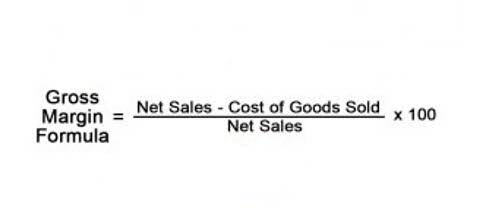
Liabilities are listed on your company’s balance sheet and directly impact your business’s assets and equity. There are several types of liabilities, and understanding each one is essential for assessing your business’s financial health and managing future cash flow. The financial statements of a business which report its profitability and financial position primarily consist of a profit and loss account and a balance sheet. Accounts recorded in these financial statements fall in either of the four categories i.e., revenue or expense and assets or liabilities.
Equity
- Our payroll processors also provide benefits administration, compliance services, and more.
- Distinguishing between liabilities and expenses can trip up even experienced finance teams.
- One of the best ways to avoid these kinds of mistakes is by automating the process.
- Expenses are the payment of money to another individual in exchange for goods and services.
- It also helps you secure financing from a bank, lender, or investor.
Short-term liabilities appear first on the right side of your balance sheet. List long-term liabilities after the total short-term liabilities. With liabilities, you don’t have to pay immediately after you receive Travel Agency Accounting a good or service. Liabilities can fluctuate daily as you add new debt and make payments. Understanding SaaS accounting is essential to managing your business effectively, making informed decisions, and navigating the complexities of growth with confidence. Accounts payable typically involves short-term obligations due within a specific period.
Common Types of Accrued Expenses
- At the end of each month, the company needs to record an accrual for the vacation time that has been earned by employees but not yet taken.
- Companies may pay for the goods and services later, even though a supplier might provide them now.
- Liabilities appear on a company’s balance sheet, which provides a snapshot of its financial position at a specific point in time.
- Below we’ll cover their basic definitions and functions, how they factor into the balance sheet and provide some formulas and examples to help you put them into practice.
- While accruing expenses can improve tax planning and cash flow management, it also increases current liabilities, which may affect creditworthiness and borrowing capacity.
Liabilities are crucial for understanding a company’s financial leverage and solvency. A high level of liabilities compared to assets can indicate increased financial risk, while a healthy balance suggests financial stability. Assets are the items your business owns that add value to your company.
- Inaccurately or incorrectly reporting them can impact your company’s financial well-being and decision-making.
- It can arise from loans, services received but not paid for, or any other financial obligation.
- These expenses are recorded on the income statement and are deducted from revenue to determine net income.
- An expense is a cost incurred by a business to generate revenue, impacting the income statement and reducing net profit in the accounting period in which it occurs.
- The current/non-current liabilities are are listed under the liabilities and shareholder’s equity section.
“Enhancing Business Performance Through Strategic Financial Planning: The Role of a Finance Professional”

All long-standing liabilities due in the forthcoming are more than one year out. Although the loan is a 30-year loan, most principal and interest payments are due every 30 days. ‘The business is liable for any outstanding amounts it owes for goods or services it has received but has not yet paid for.
A Step-by-Step Guide to Starting Accounting Bookkeeping
Payroll expense is the use of assets to pay workers for completing business tasks. Working a standard 40-hour work week will result in total wages of $800. Companies report this amount as payroll expense in their general ledger. The business will incur this expense as long as the difference between liabilities and expenses individual remains employed by the company.

Significance of Liabilities and Expenses in Financial Reporting

Liabilities appear on a company’s balance sheet, which provides a snapshot of its financial position at a specific point in https://www.bookstime.com/ time. Common examples include accounts payable, which are short-term obligations to suppliers for goods or services received on credit. Loans from banks, like a line of credit or a mortgage, also represent significant liabilities. Another example is unearned revenue, where a customer pays in advance for services or goods that will be delivered in the future. Understanding the fundamental differences between liabilities and expenses is a common challenge for many people trying to grasp basic accounting principles.
human growth hormones steroids
References:
beast creatine side effects (https://Topbookmarks.cloud/)
safe way to take steroids
References:
powerupup.net
EQ provides excellent energy and lean mass benefits for the
bodybuilder, although mass features can be slow and not on the level of extra powerful bulking steroids.
Those wanting moderate mass features rather than extreme ones will get pleasure
from Equipoise for this objective. Some customers of Equipoise report an increase in urge for food,
while others expertise no change in appetite,
indicating that the impact is highly individualistic.
Primobolan might help you obtain that hardened, ripped look with no water retention. It’s no secret that this was probably one of Arnie’s favourite steroids.
Preserving muscle tissue is a crucial good thing about Primobolan, as it stops you from turning into catabolic while
your chopping food plan is a calorie deficiency.
Research signifies that testosterone also can negatively affect
high-density lipoprotein (HDL) and low-density lipoprotein (LDL) ldl cholesterol ratios, potentially
inflicting hypertension (high blood pressure) (2).
However, research suggest that such elevations in blood strain usually are not as extreme from testosterone
in comparison with stronger anabolic steroids. Thus, testosterone is the least cardiotoxic
steroid in our expertise. Estrogen steroid hormone can even increase muscle mass and power when saved at healthy, youthful levels.
Research present that each men and premenopausal girls have the identical stage of adductor pollicis
strength relative to muscle mass.
Bulking and slicing will have two very completely different diets and workout strategies.
Halotestin should be run for not than three weeks, with 30mg daily really helpful as the utmost.
Take Tren at 300mg weekly, Anavar at 50mg day by day, and don’t forget your testosterone prop at 300mg weekly.
Mesterolone, under the brand name Proviron, is a helpful cutting steroid for these who know how to take advantage
of this unique compound. Whereas it can be used for mass features,
this steroid is especially used in cutting cycles. Proviron is derived from dihydrotestosterone (DHT)
and is used as an oral steroid. So, Clen isn’t a fat loss miracle, but it’s a strong metabolic booster that may help you burn energy quicker, and we all need to try this in a slicing cycle.
Clen is commonly stacked with potent slicing steroids like Anavar or Winstrol and helps provide
that further edge as you’re employed to turn into leaner throughout your slicing phase.
If you’re going to run a Clen cycle, take a glance at
my complete Clenbuterol cycle guide.
One of the hallmarks of anabolic steroids is their capability to reinforce nitrogen retention, maintaining the body
in an anabolic (muscle-building) state. A steroid’s half-life determines how lengthy it remains
active within the physique. While longer half-lives (like Testosterone Enanthate) allow for more stable blood ranges and fewer frequent
injections, shorter-acting steroids may ship quicker,
more aggressive power positive aspects.
You’ll only be doing a 6-week cycle on Dianabol to avoid liver toxicity.
Dbol also can enhance ranges of estrogen as a
outcome of it can aromatize, which brings some potential unwanted effects like gynecomastia (increased breast
tissue) and fluid retention. You will also need to be careful for androgenic unwanted side effects and think about taking aromatase inhibitor medication alongside
it to reduce estrogen and minimize these unwanted
effects. Biking, stacking, and pyramiding are three
widespread ways that anabolic steroid abusers take their drugs.
Biking refers to taking a steroid for a interval, stopping for the
physique to relaxation, after which restarting once more.
If individuals use multiple sort of steroid at a time, this
is known as stacking.
It assists with the motility of the egg and sperm towards
each other and the transport of the embryo towards the uterus on the right time.
Utilizing dissociative drugs illictly may be risky and can lead
to serious injury and/or psychological trauma. Opioid abuse or addiction can end
result in devastating effects on a person’s well being and
psychological and emotional well-being. Withdrawal symptoms (also often identified as being
“dope sick” are highly unpleasant and are sometimes the catalyst for relapse.
Some frequent examples of anabolic steroids embody testosterone, Dianabol (methandrostenolone), Trenbolone,
Deca-Durabolin (nandrolone), and Anavar (oxandrolone).
The advantages of anabolic steroids embody elevated muscle mass,
improved power, enhanced endurance, and quicker restoration from exercise-related accidents.
However, their misuse can lead to severe side effects such as liver
injury, heart issues, hormonal imbalances (like gynecomastia and testicular shrinkage), mood swings, and aggression. According
to a examine printed in the Journal of Scientific Endocrinology and Metabolism, anabolic steroids, that are commonly used in bodybuilding, can improve muscle mass by 5-20% and strength by 25-50%.
The National Institute on Drug Abuse reports that long-term steroid use
can lead to liver damage, hypertension, aggressive habits, and other health problems.
As one might regard testosterone because the essential male intercourse hormone,
these anabolic steroids declare to supply testosterone-like androgenic
results. Lean muscle development, decrease fats accumulation, husky voice, and elevated
facial and physique hair could presumably be some signs of correct testosterone levels in a male physique.
References:
NooCube safety profile
hgh bodybuilding kaufen
References:
hgh cycle For Beginners – odvinsk.ru –
hgh cycle for beginners
References:
wehrle
hgh stack
References:
1 iu hgh per day (https://bestbizportal.com/read-blog/178153)
4 iu to mg hgh
References:
hgh and testosterone cycle results (http://hikvisiondb.webcam/)
hgh dosierung
References:
hgh testosteron; askmeclassifieds.com,
3 iu hgh
References:
hgh women before and after (blogfreely.net)
the rock hgh
References:
hgh booster (anantsoch.com)